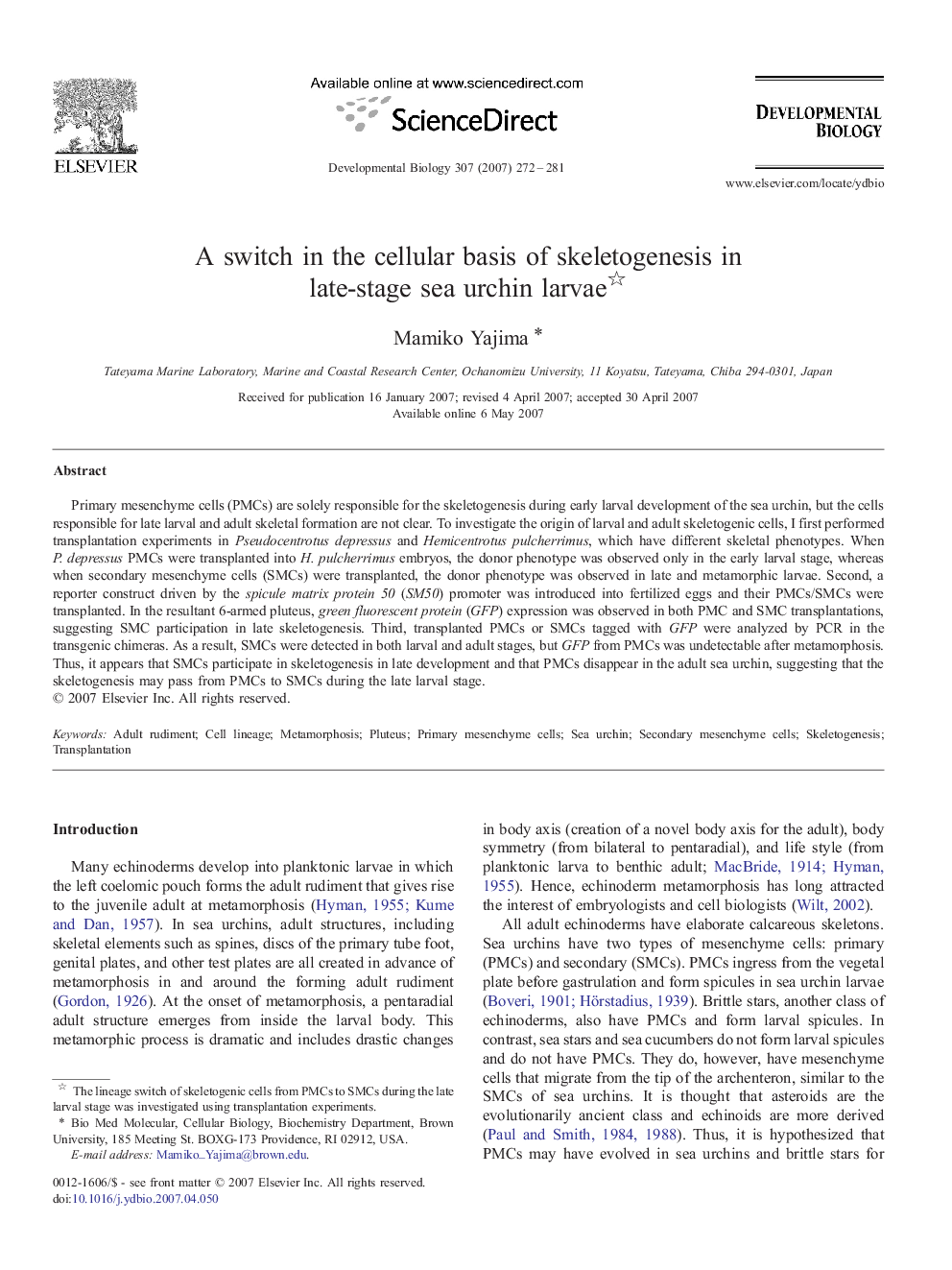| Article ID | Journal | Published Year | Pages | File Type |
|---|---|---|---|---|
| 2175016 | Developmental Biology | 2007 | 10 Pages |
Primary mesenchyme cells (PMCs) are solely responsible for the skeletogenesis during early larval development of the sea urchin, but the cells responsible for late larval and adult skeletal formation are not clear. To investigate the origin of larval and adult skeletogenic cells, I first performed transplantation experiments in Pseudocentrotus depressus and Hemicentrotus pulcherrimus, which have different skeletal phenotypes. When P. depressus PMCs were transplanted into H. pulcherrimus embryos, the donor phenotype was observed only in the early larval stage, whereas when secondary mesenchyme cells (SMCs) were transplanted, the donor phenotype was observed in late and metamorphic larvae. Second, a reporter construct driven by the spicule matrix protein 50 (SM50) promoter was introduced into fertilized eggs and their PMCs/SMCs were transplanted. In the resultant 6-armed pluteus, green fluorescent protein (GFP) expression was observed in both PMC and SMC transplantations, suggesting SMC participation in late skeletogenesis. Third, transplanted PMCs or SMCs tagged with GFP were analyzed by PCR in the transgenic chimeras. As a result, SMCs were detected in both larval and adult stages, but GFP from PMCs was undetectable after metamorphosis. Thus, it appears that SMCs participate in skeletogenesis in late development and that PMCs disappear in the adult sea urchin, suggesting that the skeletogenesis may pass from PMCs to SMCs during the late larval stage.
